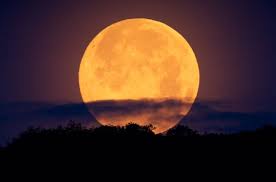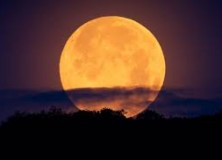 Point your eyes to the sky this weekend and you’ll have a chance to see Earth’s moon better than most nights. Starting tonight, a so-called “supermoon” will be viewable across the United States.
Point your eyes to the sky this weekend and you’ll have a chance to see Earth’s moon better than most nights. Starting tonight, a so-called “supermoon” will be viewable across the United States.
There will be a full moon in the sky starting tonight and into early Saturday, and this time around the super-sized satellite will look larger than usual. When a full moon occurs at the same time that its orbit brings it closest to the Earth, as expected this weekend, onlookers are greeted with what scientists at NASA call a “supermoon.”
Five supermoons are expected in all during the course of 2014, and two of them already happened in the month of January. Beginning this evening, however, we will have our third chance this year to see a full moon coincide as the satellite’s orbit reaches “perigee” (or “near earth”).
Scientists expect that this weekend’s full moon will reach perigee at around 222,611 miles away from Earth — around 30,000 miles closer than the moon will be when it’s at its furthest this year.
The moon typically reaches perigee every 28 days or so, and traditional full moons are hardly uncommon. When the two occur at the same time, however, stargazers see a moon that appears much brighter and larger than what’s normally expected by turning to the sky.
Don’t be disappointed if you were late in reading this: 2014’s fourth and fifth supermoons are expected to occur in August and September, respectively, and the next instance will bring our natural orbiting satellite closer to Earth than what’s expected this evening.
While these spectacular sightings might be something to behold, but aren’t exactly the rarest of event — on average, they show up around five times a year.
Disclaimer: On January 4, 2016, the owner of WestEastonPA.com began serving on the West Easton Council following an election. Postings and all content found on this website are the opinions of Matthew A. Dees and may not necessarily represent the opinion of the governing body for The Borough of West Easton.






